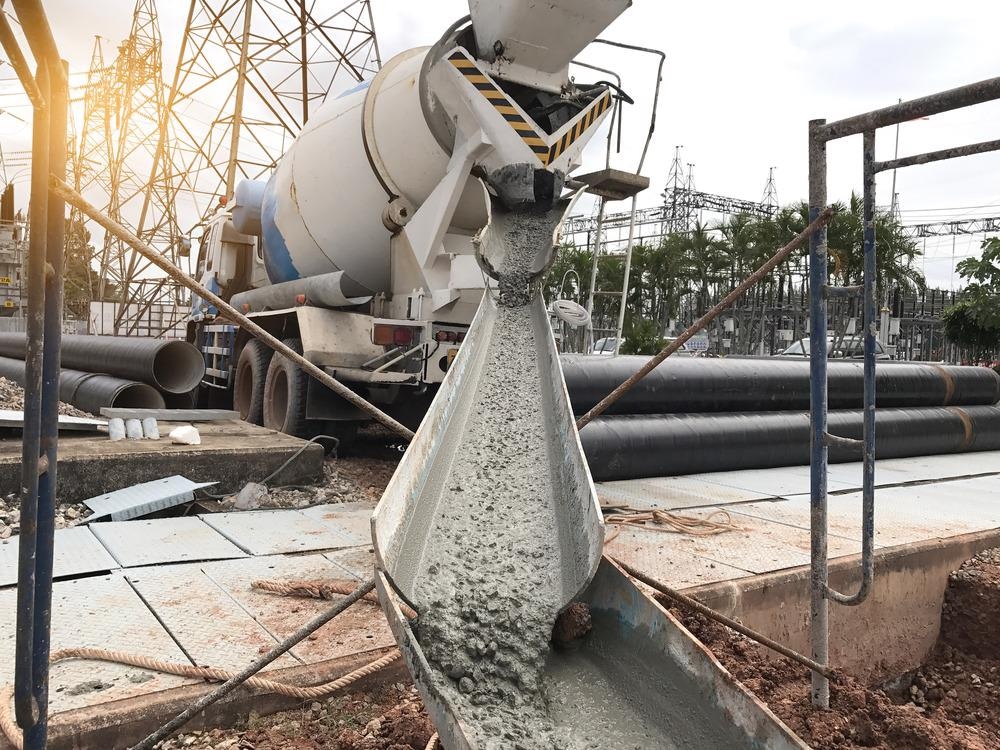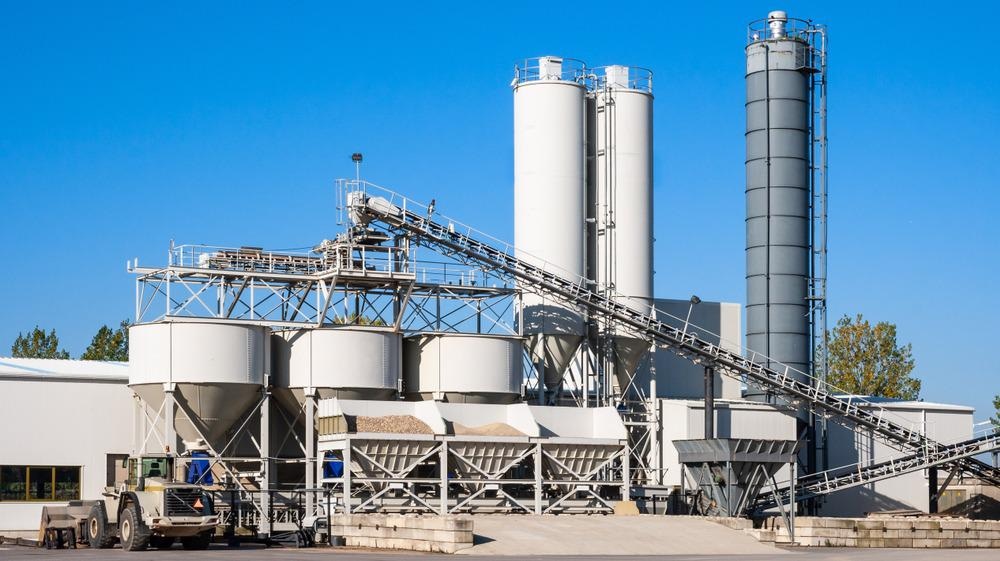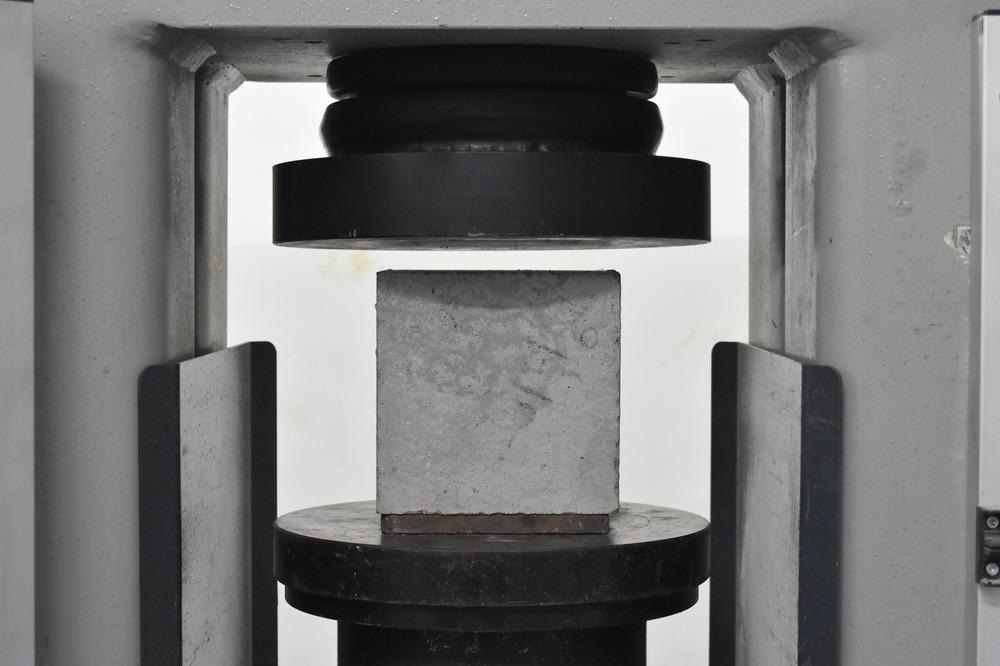AZoBuild talks to Professors Noguchi and Maruyama, from the University of Tokyo, about their research and development of Calcium Carbonate Concrete (CCC), a new material that has the potential to cause a sustainable revolution in the construction industry.
Can you tell us about your background and how it led you to this research project?
Takafumi Noguchi
Concrete is the second most-consumed substance on earth after water. As a huge amount of resources (for example cement, which is the main material of concrete, made of limestone) are used in the production of concrete, there is concern about future resource depletion (the meaning of resource depletion includes not only material depletion but also difficulty in collection of resources due to an increase in required energy and cost).
Therefore, we have been developing completely recyclable concrete since the 1990s. In addition, cement production emits 7% of total CO2 worldwide, and we have been working to reduce it through the development of carbon capture technology using concrete waste.
In order to realize a carbon-neutral society by 2050, CCUS technology in which CO2 is used as a resource is required. We thought that if we could produce new concrete from CO2 in the atmosphere and concrete that exists everywhere, we would be able to achieve both carbon neutrality and resource recycling at the same time.
Ippei Maruyama
I have been involved in cement chemistry for 15 years, to understand the functional development mechanisms of cement-based materials. At the same time, I was also doing research in the geological field, especially related to calcium carbonate concretion.
We found that calcium carbonate naturally forms concretion (large agglomeration) in the seabed and binds the sandstone sand in a relatively quick process. I wondered if this process could be applied to make construction materials. Calcium carbonate is made by CO2 and CaO, and these are obtained from the air and demolished concrete. I think that this is a good time in Japan especially to change the construction field to be a more sustainable one.
How significant is the problem of waste and air pollution in the construction industry?
Many resources have been input into the construction of civil structures and buildings since the end of World War II, and if they are demolished after service life a large amount of waste will be generated. Currently, most of them are laid under roads or backfilled in the ground and are not recycled into concrete. Securing the application of recycled concrete waste or constructing the final disposal site then becomes a big problem in the future.
On the other hand, since CO2 emissions related to buildings and civil structures are about half of the world total (including CO2 emissions from energy used for heating and cooling in buildings), ZEB (Zero Energy Building) / ZEH (Zero Energy House) development and dissemination are progressing.

Image Credit: sakoat contributor/Shutterstock.com
If all energy becomes renewable by 2050, only CO2 emissions due to calcination of fossil resources (limestone) will remain, and it is necessary to reduce these. The CO2 emitted by the cement industry is estimated to account for approximately 7% of the world's total emissions, and has played a role in global warming since the start of the Anthropocene.
Portland cement emits approximately 770 kg-CO2/t of cement during production, of which 480 kg/t is due to the calcination of limestone. The total amount of Portland cement produced globally since the beginning of the 20th century is approximately 110 billion tons, and the total amount produced in Japan is approximately 4 billion tons.
In contrast, the cumulative amount of CO2 produced by the calcination of limestone for cement production is estimated to exceed 2 billion tons (in Japan), and this amount is still increasing.
In general, concrete is made from ordinary cement, where one of the resources is limestone (CaCO3). To obtain the CaO from the limestone, the cement industry must emit CO2 by decomposing limestone.
Therefore, CO2 emission is an inevitable process for the current cement concrete industry. At the same time, the concrete waste can be recognized as an urban mine of CaO. Especially, if we utilize the CaO efficiently from the demolished concrete waste, we will no longer emit CO2 through the production of concrete.
Calcium carbonate concrete is made from waste concrete and CO2 from the air. How are these used to create this new building material?
Concrete waste powder is put into water, and air bubbles are blown into this water to produce a calcium bicarbonate solution.
The solution is flowed between the concrete waste particles in the container. Then, calcium carbonate crystals are precipitated by controlling temperature, pH and evaporation rate.
The calcium carbonate combines the particles to form CCC. In practical applications of CCC, our first approach was to develop bricks made of CCC, and then we will move to building structures such as beams, columns, and walls.

Image Credit: VanderWolf Images/Shutterstock.com
What are some of the properties of this new concrete? How does it compare to regular concrete?
The most essential property of concrete is compressive strength, and the higher the compressive strength, the higher the tendency for many other good performances (e.g., modulus of elasticity and durability).
The compressive strength of CCC is less than 10MPa at present, which is only 1/4 to 1/3 of the compressive strength of current conventional concrete, but we can utilize it as a construction material for small housing by considering such characteristics.
We are investigating in order for CCC to obtain a compressive strength of 15 to 20 MPa after one year.
Is the carbon used to power the production process more or less than that recycled?
According to the measurement results of a small-scale research facility, a larger amount of energy is currently required to produce CCC.
We believe that the required energy can be reduced by increasing the scale of the equipment and optimizing it. In other words, the current situation where more CO2 is emitted than used (recycled) will be improved in the future.
In recent experiments, some specimens of CCC could be made successfully with less CO2. Even now, total energy and emitted CO2 are already less than those of ordinary concrete.
Are there any further challenges yet to be overcome?
First, we have to increase the strength as well as the size of the material.
Further, as conventional cement concrete is alkaline, the internal reinforcing steel bars are kept free of corrosion; however, because CCC is neutral, the reinforcing steel bars require protection from corrosion, or other materials apart from steel must be used as reinforcement.

Testing the strength of concrete. Image Credit: Zubair Rashid/Shutterstock.com
In addition, a lot of concrete structures are currently constructed on-site using cast-in-place ready-mixed concrete, but CCC structures are expected to be built in the form of assembling precast concrete members on-site. It must be shown that CCC structures constructed in a non-traditional way, using non-traditional concrete, have the same structural safety and functions as before.
It is necessary to develop new structural forms, to establish new design methods for structural safety and durability, and to revise various codes and standards.
How significant do you think the adoption of calcium carbonate concrete in the future would be for the environment?
As CCC is permanently carbon-neutral like wood, and can be recycled as many times as you like for local production and local utilization, it greatly contributes to solving the problems of global warming and resource depletion.
Also, as CCC can be made from resources (concrete waste) already collected from nature, it will not cause the destruction of nature. Therefore, we believe that CCC is a sustainable construction material that can be produced forever.
What do you personally think is the most exciting aspect or potential use of this new material?
Takafumi Noguchi
During the Roman Empire, a lot of structures were built using the concrete of the time. Further, a lot of modern concrete structures have been constructed since the Industrial Revolution, during which time Portland cement was developed. CCC can be said to be the most suitable concrete for the new era. Our "C4S Research & Development Project" can be said to be a grand project to develop CCC in modern civilized society and save the earth.
Ippei Maruyama
If we can change construction to be green, it will be a great contribution to sustainability. All buildings and constructions can become carbon-neutral, and this will be a great success for humanity.
Where can readers find more information?
Project funding support agency: https://www.nedo.go.jp/english/news/ZZCA_100007.html
International conference where the project was presented: https://www.icef.go.jp/
Paper on completely recyclable concrete: https://onlinelibrary.wiley.com/doi/10.1002/suco.201100002
Paper on carbon dioxide absorption by concrete waste: https://www.sciencedirect.com/science/article/abs/pii/S0959652619328501?via%3Dihub
About
Takafumi Noguchi has been a Professor of the Graduate School of Engineering since 2014 and Project Manager of the “C4S Research & Development Project”. He is in charge of major positions in several national and international organizations, e.g. a chair of ISO/TC71/SC8 (Environmental management for concrete and concrete structures) since 2018, a president of the Japan Society for Finishing Technology since 2021, and a vice president of the Architectural Institute of Japan since 2021, etc. His research interests include the development of carbon-neutral concrete, sustainable recycling of concrete structures, conservation of historic concrete structures, optimum rehabilitation of concrete structures, etc.
and international organizations, e.g. a chair of ISO/TC71/SC8 (Environmental management for concrete and concrete structures) since 2018, a president of the Japan Society for Finishing Technology since 2021, and a vice president of the Architectural Institute of Japan since 2021, etc. His research interests include the development of carbon-neutral concrete, sustainable recycling of concrete structures, conservation of historic concrete structures, optimum rehabilitation of concrete structures, etc.
Ippei Maruyama is a Professor of the Graduate School of Engineering at the University of Tokyo (cross-appointment) and a Professor of the Graduate School of Environmental Studies at Nagoya University, Japan. He is a material scientist and concrete engineer whose main research interests concern advancing the understanding of functional developmen t mechanisms of construction materials. He is currently a lead researcher of several notional projects, namely, 1) Reaction process for calcium carbonate concrete, 2) Aging management of energy plants, 3) Disposal of contaminated concrete of Fukushima Daiichi nuclear power plants. He is an editor in chief of the Journal of Advanced Concrete Technology, published by the Japan Concrete Institute.
t mechanisms of construction materials. He is currently a lead researcher of several notional projects, namely, 1) Reaction process for calcium carbonate concrete, 2) Aging management of energy plants, 3) Disposal of contaminated concrete of Fukushima Daiichi nuclear power plants. He is an editor in chief of the Journal of Advanced Concrete Technology, published by the Japan Concrete Institute.
Disclaimer: The views expressed here are those of the interviewee and do not necessarily represent the views of AZoM.com Limited (T/A) AZoNetwork, the owner and operator of this website. This disclaimer forms part of the Terms and Conditions of use of this website.